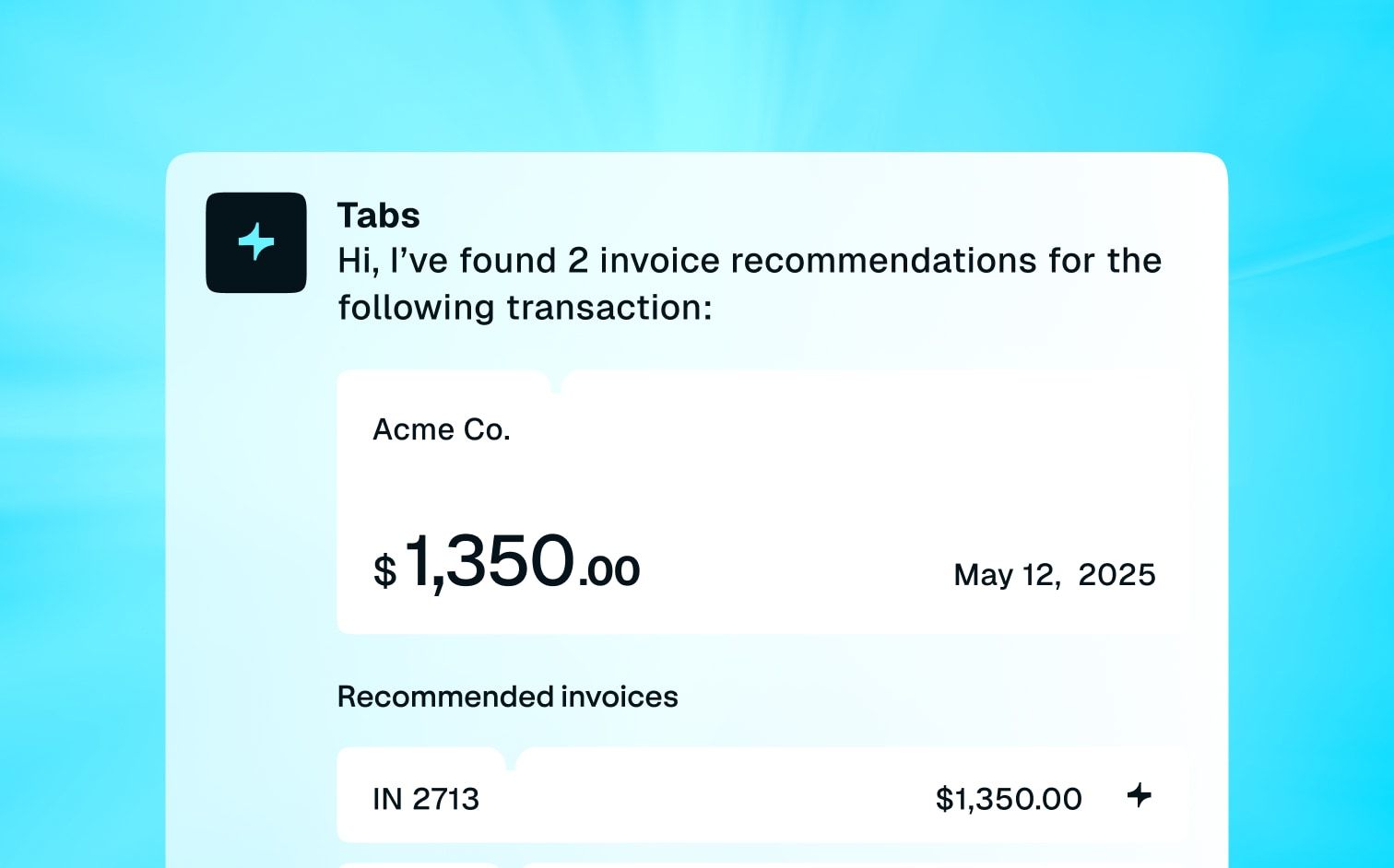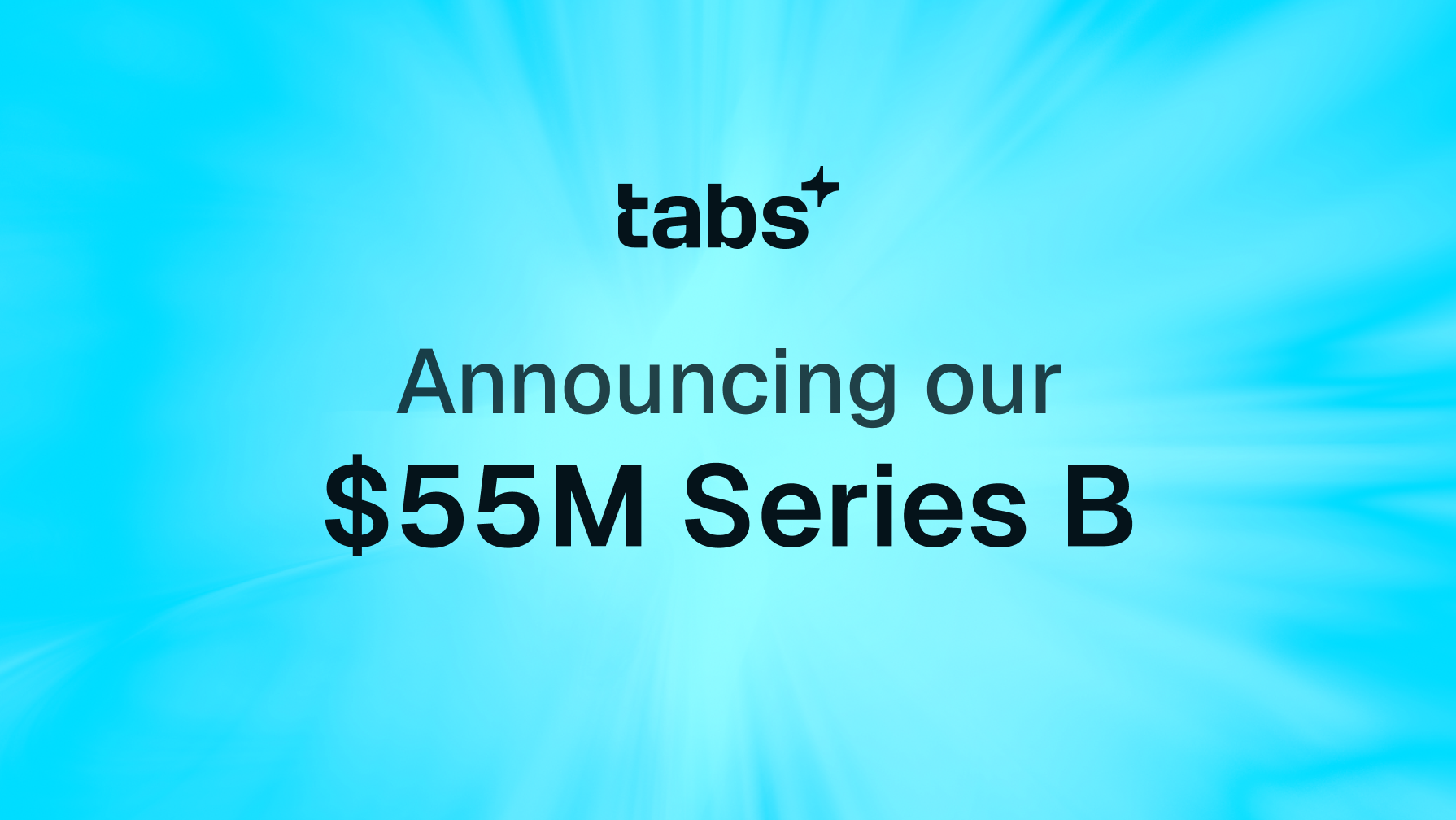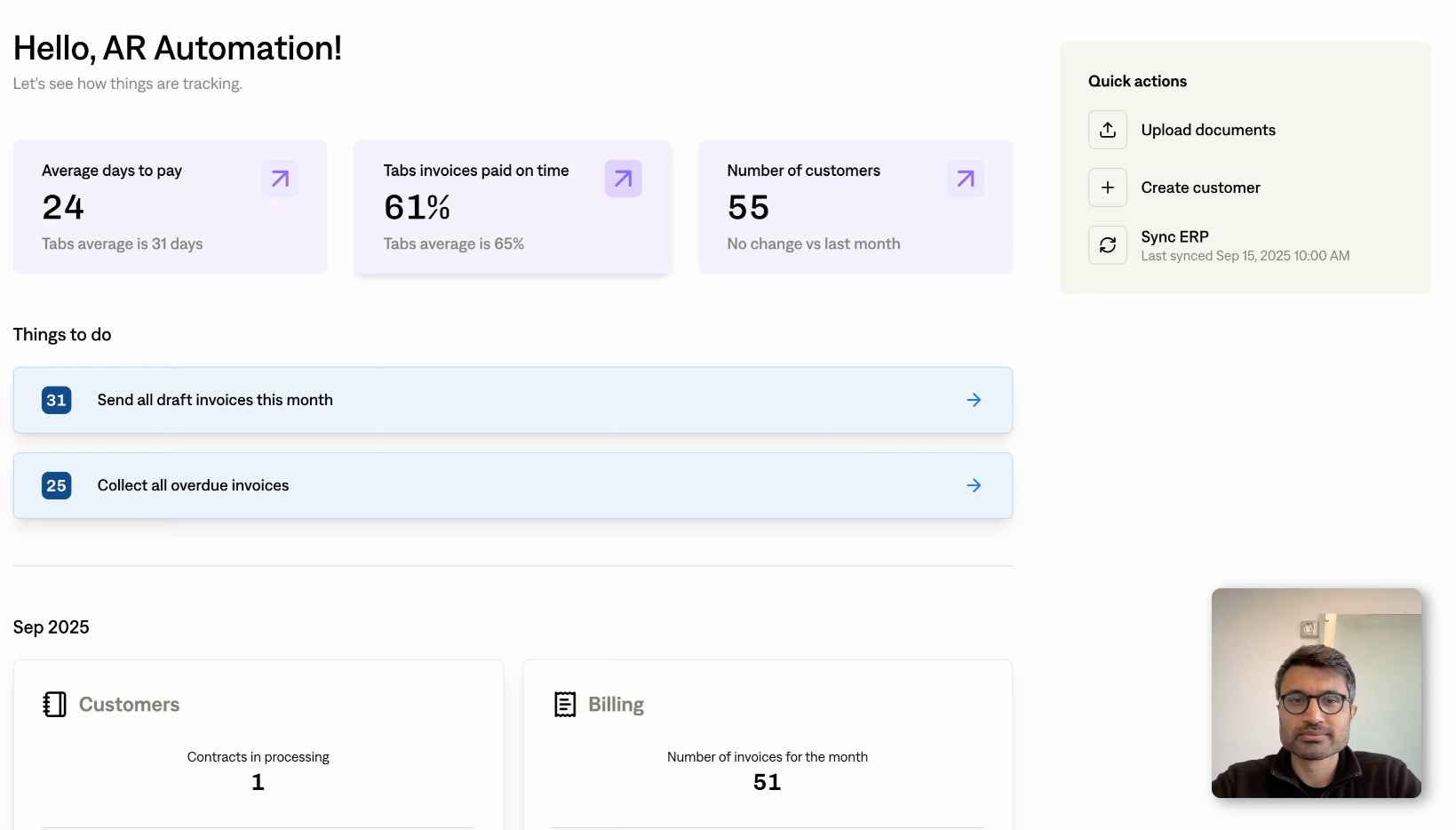One of the most significant hurdles of running a SaaS business is managing bad debt expense. These uncollected customer payments impact your cash flow, distort your financial reporting, and hinder your growth potential.
This article provides a practical, step-by-step guide to understanding and managing bad debt expense. We'll cover everything from defining and calculating bad debt to exploring its impact on your financial statements and tax implications. We'll also equip you with actionable strategies to minimize bad debt, improve your collections process, and leverage technology to automate your billing and gain valuable insights into your financial health. Consider this your essential toolkit for navigating the complexities of bad debt and building a financially sound SaaS business.
Key Takeaways
- Bad debt directly impacts your bottom line: Unpaid invoices affect your cash flow and profitability. Accurate accounting for bad debt ensures you have a realistic view of your company's financial health.
- Proactive management minimizes losses: Implement clear credit policies, conduct regular account reviews, and establish an efficient collections process to reduce bad debt and improve your financial outlook.
- Technology simplifies complexity: Leverage automated billing systems and robust reporting tools to streamline operations, gain valuable insights into your financial data, and improve the accuracy of bad debt forecasting.
What is a Bad Debt Expense?
A bad debt expense is simply the cost of doing business when customers don't pay their invoices. It's the money your SaaS company loses because clients can't or won't pay what they owe.
Accurately accounting for this is crucial for a realistic view of your company's financial health. Ignoring bad debt makes your business look more profitable than it actually is, misleading investors and impacting your financial decisions. Understanding bad debt is essential for any SaaS business extending credit to its customers.
How It Differs from Other Expenses
While bad debt is technically an expense—appearing alongside your selling, general, and administrative costs—it also acts like a loss account, directly reducing your net income. What distinguishes bad debt is its treatment on your financial statements. The allowance for doubtful accounts sits on your balance sheet, offsetting accounts receivable.
This allowance represents the portion of outstanding invoices you predict won't get paid. The bad debt expense itself appears on your income statement, reflecting the actual amount of uncollectible debt during a specific period. This distinction is important for understanding bad debt's overall impact on your financial reporting.
Why Bad Debt Matters
For SaaS companies, recurring revenue is the lifeblood of the business. But what happens when that revenue stream is disrupted by unpaid invoices and mounting bad debt? Ignoring this issue can have serious consequences, impacting not only your bottom line but also your long-term financial health and reputation.
Impact on Financial Health
Bad debt directly impacts your cash flow. It represents money owed for services rendered that is unlikely to be collected. This shortfall creates a ripple effect, making it difficult to cover operating expenses, invest in growth, and maintain a healthy financial runway.
Think of it like a leaky faucet: a small drip may seem insignificant, but over time, it leads to substantial water loss. Similarly, accumulating bad debt drains your resources and limits your ability to scale.
High levels of bad debt can hinder your ability to secure future funding or even threaten the solvency of your business. Monitoring key accounts receivable metrics like days sales outstanding (DSO) and collection effectiveness index (CEI) can help you identify potential problems early on and take corrective action. By staying on top of these metrics, you can improve collection rates, reduce overdue accounts, and minimize the risk of bad debt eating into your profits.
Importance of Accurate Reporting
Beyond the immediate financial impact, accurately accounting for bad debt is crucial for maintaining transparent and trustworthy financial reporting. Underreporting bad debt creates a distorted picture of your company's financial performance, making it appear more profitable than it is. This can mislead investors and stakeholders who rely on accurate financial information to make informed decisions.
Think of your financial statements as a report card for your business. Inflating your grades might give a temporary illusion of success, but the truth will come out. Properly managing doubtful accounts and bad debt ensures that your financial reports reflect the true state of your business. This builds trust with investors and helps you make sound strategic decisions based on realistic data.
Estimating bad debt isn't about predicting precisely which customers won't pay; it's about recognizing the inherent risk in extending credit and accounting for potential losses. This practice allows for more stable and predictable financial reporting, avoiding large swings in reported profits that can raise red flags. Accurate reporting provides a clear picture of your financial health, enabling you to make informed decisions about pricing, resource allocation, and future growth strategies. By acknowledging and accounting for bad debt, you demonstrate financial responsibility and build credibility with stakeholders.
Calculating Bad Debt Expense
Accurately calculating bad debt expense is crucial for SaaS companies to maintain healthy financials. There are two primary methods for calculating this expense: the direct write-off method and the allowance method. Let's explore each.
Direct Write-Off Method
The direct write-off method is straightforward. When you know a customer won't pay, you remove that amount of bad debt expense from your accounts receivable. This method is generally suitable for small amounts of bad debt. For example, if a customer with a small outstanding balance goes out of business, you might use the direct write-off method.
While simple, this method doesn't always accurately reflect your financial standing, especially with substantial bad debts. It also doesn't adhere to Generally Accepted Accounting Principles (GAAP), which are the standard rules for accounting in the US.
Allowance Method
The allowance method is more nuanced. With this method, you estimate potential bad debts and set aside a reserve called an allowance for doubtful accounts. This allowance sits on your balance sheet and reduces your accounts receivable, giving a more realistic view of what you expect to collect.
This method is particularly useful for SaaS companies with subscription models, as predicting churn and potential non-payment is a constant consideration. You can adjust this allowance periodically as your understanding of potential bad debts changes.
Pros and Cons of Each Approach
Each method has its advantages and disadvantages. The direct write-off method is simpler, requiring less estimation and tracking. However, it can provide a less accurate picture of your current financial health, especially with a significant amount of outstanding receivables.
The allowance method, while more complex, offers a more realistic view of your finances and follows GAAP. It allows you to recognize potential losses upfront, smoothing out the impact of bad debt on your financial statements. However, it requires estimations, which can be challenging, and involves more complex accounting procedures.
For most SaaS businesses, the added complexity of the allowance method is worthwhile for the improved accuracy and compliance it provides. Tabs offers tools to help SaaS businesses manage their revenue streams and gain better insights into their financial performance.
Estimating Bad Debt Expense
Accurately estimating bad debt expense is crucial for SaaS companies to maintain healthy financials. Let's explore two common methods and key factors that influence their accuracy.
Percentage of Sales Method
The percentage of sales method calculates bad debt expense as a percentage of your total sales. Start by analyzing historical sales data to identify trends in bad debt. What portion of your past sales typically goes uncollected? Apply that percentage to your current sales figures to project your future bad debt.
For example, if 2% of your sales historically resulted in bad debt, and your current sales are $1 million, your estimated bad debt expense would be $20,000. This method is straightforward, but its accuracy depends on consistent sales patterns. If your sales cycle or customer base changes significantly, you'll need to adjust your percentage accordingly. It's important to have comprehensive sales reporting.
Percentage of Receivables Method
The percentage of receivables method focuses on your existing accounts receivable. Categorize your receivables based on how long they've been outstanding (e.g., 30 days, 60 days, 90+ days). Older invoices have a higher likelihood of becoming bad debt. Assign a percentage to each aging category based on historical collection rates.
For instance, you might estimate that 1% of receivables under 30 days old will go uncollected, while 5% of receivables over 90 days old will become bad debt. Apply these percentages to the total value of receivables in each category to arrive at your overall bad debt estimate. This method provides a more granular view of your potential bad debt, especially if you have complex invoicing.
Factors Influencing Accuracy
Several factors can impact the accuracy of your bad debt estimates. Regularly monitoring key financial metrics like Days Sales Outstanding (DSO) and Receivables Turnover Ratio provides valuable insights into your collections process. DSO measures the average time it takes to collect payments, while the Receivables Turnover Ratio indicates how efficiently you're converting receivables into cash.
Trends in these metrics can signal potential issues that may affect bad debt levels. Additionally, track your Bad Debt Ratio—calculated as Bad Debt Expense divided by Credit Sales. This ratio serves as a benchmark for evaluating your credit risk management. Analyzing changes in this ratio over time can help you understand the underlying causes of increasing bad debt and take corrective action.
By understanding these factors and using them to refine your estimation methods, you can improve the accuracy of your financial projections and make more informed business decisions. You can also use AI to extract key contract terms and further reduce the risk of bad debt. For SaaS businesses looking to accept a variety of payment types and simplify revenue recognition, choosing the right billing platform can also contribute to more accurate financial forecasting.
How Bad Debt Affects Financial Statements
Understanding how bad debt affects your financial statements is crucial for accurate reporting and informed decision-making. Let's break down the impact on each key statement.
Effects on the Income Statement
Bad debt expense is an operating expense recognized on the income statement. It represents the portion of your accounts receivable that you predict won't be collected. This directly reduces your net income—it's the cost of offering credit to customers. Accurately recording this expense is essential for reflecting the true profitability of your SaaS company.
Overestimating bad debt can unnecessarily lower your reported income, while underestimating it can paint an overly optimistic picture. Finding the right balance is key.
Impact on the Balance Sheet
Bad debt impacts your balance sheet through the "allowance for doubtful accounts," a contra-asset account that reduces the reported value of your accounts receivable. It represents the portion of your receivables that you anticipate not collecting. By deducting this allowance, your balance sheet provides a more realistic view of your company's assets and what you can actually expect to collect from customers. This, in turn, affects your working capital and overall financial position.
Importance for Stakeholders
Accurate bad debt accounting is paramount for transparent financial reporting. Investors, lenders, and other stakeholders rely on your financial statements to assess the health of your business. Misrepresenting bad debt can create a misleading impression of your profitability and financial stability. Properly managing and reporting bad debt builds trust with stakeholders, allowing them to make informed decisions based on reliable data.
Minimizing Bad Debt Expense
For SaaS companies, minimizing bad debt expense is crucial for maintaining a healthy financial outlook. It's not just about recovering lost revenue; it's about building a robust financial foundation for sustainable growth. Here’s how you can proactively address potential bad debt:
Improve Credit Policies
Establishing clear credit policies is essential. This includes setting credit limits based on customer risk profiles. Consider factors like company size, industry, and payment history when assessing risk. Regularly review and update these limits.
Financial conditions change, and your credit policies should adapt. This ongoing review ensures your policies stay relevant and effective in mitigating risk. For example, you might adjust credit limits for clients in industries experiencing economic downturns.
Conduct Regular Account Reviews
Regularly reviewing your accounts is like a financial health check. It's crucial for identifying potential bad debts early. Analyze the aging of your accounts receivable. This helps you see which invoices are overdue and for how long.
Prioritize collections based on this information, focusing your efforts on the oldest and largest outstanding invoices. Proactive measures, like contacting clients with overdue accounts, can prevent them from becoming uncollectible. Early intervention often leads to better recovery rates and strengthens client relationships. Consider using automated tools to track aging receivables and flag potential issues.
Implement Early Collection Efforts
Early collection efforts can significantly reduce bad debt expense. Think of it as preventative maintenance for your finances. Monitoring key financial indicators such as Days Sales Outstanding (DSO) and Receivables Turnover Ratio provides valuable insights into your collection process. These metrics can reveal inefficiencies and areas for improvement.
Addressing these issues promptly streamlines your collections and minimizes the risk of bad debt. Tools like automated reminders and flexible payment options can simplify the payment process for your customers, making timely payments more likely. Integrating these tools with your billing system can further automate the process.
Managing Bad Debt Expense
Let's explore some practical strategies to keep bad debt under control, especially crucial for SaaS businesses where recurring revenue is key.
Thorough Credit Checks and Clear Policies
One of the first lines of defense against bad debt is establishing clear credit policies and conducting thorough credit checks for new customers. This helps you assess their creditworthiness upfront and minimize the risk of extending credit to high-risk accounts. A well-defined credit policy should outline your payment terms, late payment fees, and procedures for handling delinquent accounts.
Think of it as setting the ground rules from the start, setting expectations for your customers and providing a framework for your team to manage credit risk effectively. Regularly review and adjust your credit policies to stay current with economic conditions and your own evolving business needs. A dynamic approach to credit management is key in the ever-changing SaaS landscape.
Monitor Accounts Receivable
Keeping a close eye on your accounts receivable is crucial for identifying potential bad debts early on. Regularly tracking key metrics like Days Sales Outstanding (DSO) and the Receivables Turnover Ratio provides valuable insights into the efficiency of your collections process.
DSO measures the average number of days it takes to collect payment after a sale, while the Receivables Turnover Ratio indicates how effectively you're converting receivables into cash. Monitoring these metrics helps you spot inefficiencies and take corrective action to improve collection rates and reduce the risk of bad debts. Regularly reviewing the aging of your accounts receivable is also essential.
This involves categorizing outstanding invoices by their due dates, allowing you to quickly identify overdue accounts and prioritize collection efforts. By mitigating bad debt losses, you safeguard your financial health and profitability. For SaaS businesses, understanding your monthly recurring revenue (MRR) is also crucial for financial health.
Effective Collections Process
A systematic and well-defined collections process is essential for maintaining healthy cash flow and minimizing bad debt. This process should outline clear steps for contacting customers with overdue invoices, escalating collection efforts when necessary, and ultimately deciding when to write off an account as bad debt. Consider implementing automated reminders and notifications to streamline your collections process and reduce manual effort.
Tools like automated billing and invoicing systems can help you stay on top of outstanding invoices and ensure timely payments. A proactive approach to collections is always more effective than a reactive one. By addressing late payments promptly and consistently, you can significantly reduce the likelihood of invoices turning into bad debt. Accurately recording and analyzing bad debt expenses enables you to manage your collection strategies effectively.
This data-driven approach allows you to identify trends, refine your processes, and optimize your overall credit management strategy. Tabs's automated complex invoicing and robust reports on key metrics can empower your finance team with the data and automation they need to manage billing efficiently and minimize bad debt.
Accounting for Bad Debt Recovery
Let's face it: sometimes, even with the best efforts, you won't collect every dollar owed. But what happens when a customer unexpectedly pays an invoice you've already written off? This is where understanding bad debt recovery comes in. Knowing how to account for these recovered funds is crucial for maintaining accurate financial records and a clear understanding of your business's financial health.
Recording Recovered Bad Debts
When a customer pays a previously written-off invoice, you'll need to adjust your accounting records. First, debit your cash account to reflect the incoming payment. Then, credit your allowance for doubtful accounts. This allowance acts as a cushion for potential losses, and crediting it reverses the initial write-off, acknowledging the recovery.
This process ensures your financial statements accurately reflect this unexpected revenue. Record the recovery in the same period you receive the cash to keep your cash flow and accounts receivable balances accurate.
Impact on Financial Statements
Recovering bad debts impacts your financial statements. Your income statement gets a boost because the recovered cash is recognized as revenue, improving profitability for that period. On your balance sheet, the cash balance increases, while the allowance for doubtful accounts decreases, strengthening your company's overall financial position.
Accurate reporting of bad debt recovery is essential, providing stakeholders with a clear picture of your financial performance. Robust reporting tools can help you track these metrics and provide valuable insights.
Tax Implications of Bad Debt Expense
Understanding the tax implications of bad debt expense is crucial for sound financial management. This section clarifies how the IRS views bad debt and what you need to do to comply.
Deductibility Rules
Writing off bad debt isn't as simple as just removing it from your books. The IRS allows you to deduct bad debts, but only under specific conditions. The key is that the amount must have been previously included in your income.
For example, if a client pays for a year's subscription upfront, you recognize that revenue. If they then default after six months, you can potentially deduct the remaining six months' worth of unpaid fees. However, this differs for cash-basis accounting, which many SaaS businesses don't use. Under cash accounting, you wouldn't deduct unpaid invoices, as the revenue wasn't recognized until payment was received.
For SaaS businesses using accrual accounting, understanding these rules is particularly important for managing your tax liability.
Documentation Requirements
Proper documentation is essential when deducting bad debt. The IRS requires a detailed statement attached to your tax return. This statement should explain the nature of the debt, outlining the original transaction and the services provided.
You also need to demonstrate your collection efforts. This might include emails, letters, or records of phone calls.
Finally, you must justify why you consider the debt worthless, providing evidence that the client is unable to pay. Maintaining thorough records of all invoices, payment attempts, and communications with clients is crucial for substantiating your claim. Think of it like building a case file—the more evidence you have, the stronger your position.
Using Technology for Bad Debt Management
Let's be honest, managing bad debt can feel like a constant uphill battle. Chasing late payments, reconciling accounts, and trying to forecast potential losses takes time and resources away from focusing on growth.
But what if technology could help you gain the upper hand? It absolutely can. The right tools can transform how you handle
Automated Billing and Invoicing Systems
One of the most effective ways to minimize bad debt is to prevent it in the first place. Automated billing and invoicing systems like Tabs play a crucial role here. Manual processes are prone to errors, which can lead to incorrect invoices, delayed payments, and frustrated customers. Automated systems, on the other hand, streamline the entire billing cycle.
They ensure accurate invoices go out on time, every time, reducing the risk of payment disputes and late fees. Plus, automated systems can send out friendly payment reminders, nudging customers before their accounts even reach the “past due” stage. This reduces friction in the payment process and improves the customer experience.
Real-Time Insights and Reporting
Having a clear, real-time view of your financial data is essential for effective bad debt management. Robust reporting tools provide the insights you need to identify potential problems early on. Imagine being able to see which accounts are consistently late, spot trends in payment behavior, and track key metrics like days sales outstanding (DSO).
With this information at your fingertips, you can proactively address potential bad debt situations before they escalate. You can also use these insights to refine your credit policies and collection strategies. Access to real-time data and reporting empowers you to make informed decisions and stay on top of your financial health.
Data Analysis for Improved Accuracy
Beyond real-time reporting, technology can also help you analyze historical data to improve the accuracy of your bad debt forecasting. By leveraging data analysis tools, you can identify patterns and trends in customer payment behavior. This allows you to make more informed decisions about credit limits, payment terms, and collection efforts. For example, you might discover that customers in a specific industry or geographic location tend to pay late more frequently.
Armed with this knowledge, you can adjust your credit policies accordingly, minimizing your risk of future losses. Tabs uses AI to extract key contract terms and automate revenue recognition, ensuring accurate data for analysis and reporting to give you a solid foundation for strategic decision-making.
Related Articles
Frequently Asked Questions
How can I tell if my SaaS business has a bad debt problem?
Look for trends like consistently high Days Sales Outstanding (DSO), a low Collection Effectiveness Index (CEI), or a rising Bad Debt Ratio. These are key indicators that your collections process may need attention. If you're frequently writing off invoices, it's definitely time to take a closer look at your credit and collections practices.
What's the most effective way to reduce bad debt?
Prevention is key. Implement strong credit policies, conduct thorough credit checks on new customers, and establish a clear collections process. Automated billing and invoicing systems can significantly reduce errors and streamline the payment process, making it easier for customers to pay on time. Proactive communication with customers, including friendly payment reminders, can also go a long way in preventing late payments.
Which bad debt calculation method is best for my SaaS business?
While the direct write-off method is simpler, the allowance method is generally preferred, especially for larger SaaS companies. It provides a more accurate picture of your financial health and adheres to Generally Accepted Accounting Principles (GAAP). The allowance method involves estimating potential bad debts and creating a reserve, giving a more realistic view of your expected collections.
What tools can help me manage bad debt more efficiently?
Several software solutions can automate and streamline the process. Look for features like automated billing and invoicing, real-time reporting and analytics, and integrations with your existing CRM and accounting software. These tools can help you identify potential bad debts early on, automate collections efforts, and improve the accuracy of your forecasting. Tabs offers a suite of tools designed to help SaaS businesses optimize their billing and financial management.
How can I improve my collections process?
Start by defining clear steps for contacting customers with overdue invoices. Implement a system for escalating collection efforts when necessary, and establish criteria for writing off bad debt. Consider using automated reminders and offering flexible payment options to make it easier for customers to pay. Regularly review and analyze your collections data to identify areas for improvement and refine your strategies.





